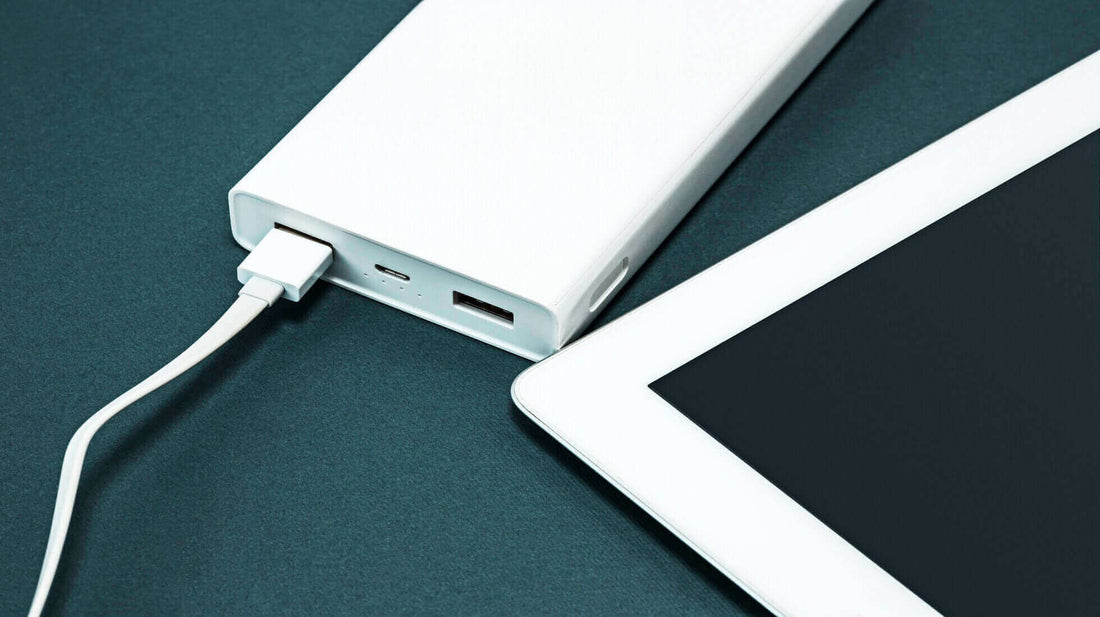
USB4: The Future of Fast and Reliable Data Transfer Explained
Share
When it comes to data transfer, speed is everything. From transferring large files to streaming high-definition video, having a fast and reliable connection is crucial. Over the years, USB technology has evolved significantly, with each new version offering improved performance and new features. The latest in this evolutionary line is USB4, a groundbreaking development that promises to revolutionise the way we transfer data. But what makes USB4 so special? Let’s dive into the details.
What is USB4?
USB4 is the latest standard in the Universal Serial Bus (USB) family, and it brings a host of improvements over its predecessors. At its core, USB4 is designed to simplify connectivity by merging the best features of USB and Thunderbolt technologies. This means faster data transfer rates, improved power delivery, and enhanced compatibility with a wide range of devices.
Speed and Performance
One of the most significant advancements in USB4 is its impressive data transfer speeds. USB4 can achieve speeds of up to 40 Gbps, doubling the maximum rate of USB 3.2 and matching the performance of Thunderbolt 3. This boost in speed makes USB4 ideal for transferring large files, such as 4K videos or high-resolution photos, in a fraction of the time.
Compatibility and Versatility
USB4 is designed with backward compatibility in mind, meaning it can work with devices that use USB 3 and USB 2 standards. This ensures that users can continue to use their existing peripherals without needing to upgrade everything at once. Additionally, USB4 is compatible with Thunderbolt 3, allowing for seamless integration with a wide range of high-performance devices.
Power Delivery
Another standout feature of USB4 is its enhanced power delivery capabilities. USB4 can deliver up to 100W of power, enabling faster charging for laptops, smartphones, and other devices. This increased power output not only reduces charging times but also allows for more power-hungry devices to be powered directly through the USB4 connection.
Data Transfer and Display Connectivity
USB4 supports simultaneous data and video transmission, making it an excellent choice for creative professionals who require high-speed data transfer and high-resolution display output. This capability allows for the connection of multiple 4K displays, or even an 8K display, through a single USB4 port, simplifying workspace setups and reducing cable clutter.
USB4 in Everyday Devices
The adoption of USB4 is rapidly growing, with many laptops, PCs, and peripheral devices now incorporating this advanced technology. From docking stations to external storage devices, USB4 is becoming a standard feature, providing users with faster data transfer and improved connectivity.
Impact on the Technology Industry
The introduction of USB4 is set to have a profound impact on the technology industry. Manufacturers can now design slimmer and more efficient devices, thanks to the streamlined connectivity options that USB4 provides. This not only enhances the overall user experience but also future-proofs devices, ensuring they remain compatible with the latest technology for years to come.
USB4 and Gaming
For gamers, USB4 offers several advantages. The high-speed data transfer rates ensure minimal latency and lag, providing a smoother gaming experience. Additionally, the enhanced power delivery means that gaming laptops and peripherals can charge faster and operate more efficiently. USB4 also supports VR and AR devices, enabling more immersive gaming experiences with superior graphics and responsiveness.
Security Features
USB4 also brings improved data security measures. Enhanced encryption and authentication protocols help protect against data theft and malware, providing users with peace of mind when transferring sensitive information. This is particularly important in today’s digital age, where data security is a top priority for both individuals and businesses.
Market Adoption and Availability
While USB4 is still relatively new, its adoption is steadily increasing. Many leading tech companies have already started incorporating USB4 into their devices, and this trend is expected to continue. As more manufacturers adopt this standard, we can expect to see a wider range of USB4-compatible devices available on the market.
Challenges and Considerations
Despite its many benefits, the implementation of USB4 does come with some challenges. Manufacturers need to ensure that their devices are fully compatible with the new standard, which may require significant updates to existing hardware and software. Additionally, consumers need to be aware of the differences between USB4 and previous versions to make informed purchasing decisions.
Comparative Analysis
When compared to other data transfer technologies, USB4 stands out for its combination of speed, power delivery, and compatibility. While Thunderbolt 3 offers similar performance, USB4’s backward compatibility and broader adoption make it a more versatile choice for most users. However, like any technology, USB4 has its pros and cons, and it’s essential to weigh these factors based on individual needs.
Consumer Benefits
For everyday users, the advantages of USB4 are clear. Faster data transfer speeds mean less time waiting for files to copy, and improved power delivery translates to quicker charging times for devices. Additionally, the ability to connect multiple high-resolution displays through a single port simplifies setups and enhances productivity.
Conclusion
In summary, USB4 represents a significant leap forward in data transfer technology. With its impressive speed, enhanced power delivery, and broad compatibility, USB4 is poised to become the new standard for high-speed data transfer. Whether you’re a creative professional, a gamer, or an everyday user, the benefits of USB4 are clear. As this technology continues to be adopted, we can look forward to a future where data transfer is faster, more efficient, and more reliable than ever before.
FAQs
What is the difference between USB4 and USB-C?
While USB4 refers to the data transfer standard, USB-C is the connector type. USB4 uses the USB-C connector but offers enhanced features and performance compared to previous USB versions.
How does USB4 enhance gaming performance?
USB4’s high-speed data transfer rates and improved power delivery ensure minimal latency and faster charging, providing a smoother and more efficient gaming experience.
Is USB4 compatible with older devices?
Yes, USB4 is backward compatible with USB 3 and USB 2 devices, allowing users to continue using their existing peripherals.
What are the power delivery benefits of USB4?
USB4 can deliver up to 100W of power, enabling faster charging for a wide range of devices, from laptops to smartphones.
How can I ensure my devices are USB4 compatible?
Look for devices that explicitly state USB4 compatibility in their specifications. Additionally, using USB4-certified cables and accessories will ensure optimal performance.
